IMHO: A SECOND LOOK — The Silistra Quartet by Janet E. Morris
Janet Morris is a prolific author and has published a library’s worth of fantastic novels, enough to keep a reader busy for years. She has written everything from science fiction and heroic fantasy, to historical fiction and modern-day thrillers, many of them in collaboration with her husband, Chris Morris. Among her many novels are Outpassage, The 40-Minute War, The Kerrion Empire Saga, The Beyond Sanctuary Trilogy, and The Sacred Band. In addition, Janet and Chris were among the original writers who contributed to Thieves’ World ™, the shared-world fantasy series first published by Baen Books in 1979. In 1986, the duo created, Heroes in Hell ™, their shared-universe series of anthologies and novels; they also edited and contributed stories to this Saga of the Damned. That series was first published by Baen Books, and ran from 1986 to 1989. In 2011, Perseid Press “resurrected” the series, and it has been going strong ever since. But I digress.
I’ve always found Janet’s novels to be thoughtful, intelligent, worldly, and wise. She has a true gift with words, and her prose is always sharp and crisp, as poetic as a memorable song lyric. Her insight into human nature, as seen through the eyes of her characters, is apparent in every one of her novels that I’ve read. There is always a strong element, a true sense of otherworldliness in her novels, too, no matter what the genre might be. No matter how strange, no matter how alien . . . her characters never come across as anything less than three-dimensional. She, as well as her husband Chris, writes characters with such sensitivity and understanding that even their villains are often likable and sympathetic.
With the release of Perseid Press’ revised and expanded “author’s cut” of The Silistra Quartet, her groundbreaking science fiction series, first published by Bantam Books between 1977 and 1979, I decided to revisit the series, which on face value bears so much in common with the sub-genre of “sword and planet.” Why ground-breaking? Because these novels feature a strong, complex, female main character, a complexity of societal norms, and the intricacies of the politics of another planet. There is also an element of eroticism in this series; to quote science fiction author Frederick Pohl, “The amazing and erotic adventures of the most beautiful courtesan in tomorrow’s universe.” But the series is so much more than that, and it goes beyond the bounds of the sword and planet sci-fi.
Janet Morris made her publishing debut in 1977 with The High Couch of Silistra, a novel that changed the game for women characters in science fiction, and for many of the women who write science fiction. A daring novel for its time, it still retains that same sort of power, and for me, did not come across as past its expiration date, especially when considering when it was first published — almost 10 years before Margaret Atwood’s The Handmaid’s Tale. If memory serves, I think this novel (and the entire series) was first promoted as a new breed of Sword and Planet science fiction, and was later labeled as Sword and Romance. The original covers for the Bantam Books first editions certainly give credence to that: they were a cross between old-school space adventure and the sexy, provocative allure of classic pulp magazines.
Silistra is a post-apocalyptic planet devastated by a war that forced its populace to hide in underground shelters for centuries and, even after many centuries, the planet has not recovered. Infertility is just one of the problems facing the planet’s populace — thanks to the fallout of that deadly war. Silistra is ruled by a theocratic caste named the Day-Keepers, who control the planet by a monopoly on technical and divine knowledge, and through a brutal police force named the Slayers. The planet is administratively divided into city-states founded around procreation centers named Wells that were originally introduced by the Day-Keepers as a solution to Silistra’s infertility problem. In time, the Wells attracted men from various planets and virtually turned into brothels, while women who manage the Wells founded aristocratic lineages named Well-Keepers that form a peculiar matriarchy.
Book One —The High Couch of Silistra
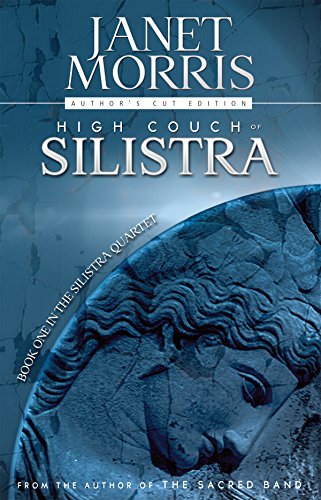
This a complex and highly intelligent read about one women’s quest in the far future to find her father and her own identity, to find her destiny and make a difference in her world, to be a catalyst for change. Herein Janet Morris deals with issues of women’s equality to men, their sexuality, the power of it, and how, in the simplest of terms, beauty, brains and sex can make a combination as potent as any nuclear blast. What it is at its heart is speculative fiction that takes a serious, hard look at the universe surrounding the main character of Estri, and her place in it. She is an aristocrat who becomes an outcast, then a slave, then a ruler. Like all of Morris books, there is a lot to think about in The High Couch of Silistra — questions of philosophy, sociology, sexuality, and governmental rule. Action and adventure? There is plenty of that, too. But this book was also carefully devised and structured, well plotted and deeply thought out. This is not a book for kids or for readers looking for a simple, pulp-action space adventure. The issues are real, the characters are real, and you will either find yourself agreeing with the politics and point of view, or not. Themes and questions may provoke careful consideration, and the story may give you pause to think. Is the sexual content explicit or not? I don’t think so, but you be the judge of that. I think Morris has handled the violence and sexuality with just the right touch, as she always manages to do. This book was ahead of its time upon its first publication, and while we have caught up to certain aspects of this novel, society still has a long way to go. In my opinion, The High Couch of Silistra has not aged at all, and holds up even better than I had expected, a fitting tribute to a writer whose books and ideas never grow old or outdated.
Book Two —The Golden Sword
Call it what you like: science fiction, space opera, sword and planet or erotic fantasy . . . The Golden Sword is all these things, and so much more. A highly intelligent and sensual novel filled with ideas and revelations, this is a gripping story that explores human sexuality and the role it plays in politics. Although the memorable characters are bisexual, toss away all your preconceived notions, for there is a humanity, a strength of will and determination, a realism and depth of emotion to these characters that will have you thinking twice about all you know and all you think you know. This is a book for mature and discerning readers who like some meat on the bones of the books they read. Janet Morris led the way for so many of the science fiction authors, both male and female, who came after. This is the second book in her classic The Silistra Quartet series, which continues on through two more volumes. In this epic, second novel, Estri, the heroine of The High Couch of Silistra, ventures further than ever before into her exotic world of sensuality and politics. This time out, she encounters Chayin, a prince of an alien culture, and discovers more about her fate . . . past, present and future. This is a powerful, exciting novel filled with passion and adventure, ideas and thought-provoking philosophies. Janet Morris truly smashed through barriers and broke new ground with her “Silistra” series, and is still breaking new ground in these “Author’s Cut” editions which delve further and deeper into Estri’s universe and into the grand vision the author had when she first set out to write this series. This is science fiction for thinking adults.
Book Three —Wind from the Abyss
This third volume is Morris’ masterful The Silistra Quartet delves deeper into the core of her world, which is not only an echo of our own world, but also a dark shadow of what the distant future might possibly bring. One of its themes is power — the power of technology, the power over our own natures, and the power to control others. Events take place shortly after those of recounted in The Golden Sword (book 2), and this time around, the main character of Estri, after having gone through so many changes and experiences in the first two novels, has been captured and held hostage for over two years by Khys, the tyrannical ruler of Silistra. She has become a pawn and a slave of this tyrant whose power over his world is all but absolute, a puppet master who will allow no one to stand in his way or speak out against him. Estri is forced to make sacrifices throughout her odyssey in order to liberate herself. Khys has had Estri’s memories “blocked” in such a way that it prevents her from remembering and being able to use those memories to take control over him. This is a story about her soul, the loss of hope and even her sanity. It felt to me that as she gazed into the “abyss,” where the winds of despair howl and whine, she saw nothing but the abyss laughing back at her. But there is hope and triumph to be found in her personal journey of rediscovery and the recovery of empowerment. This is a complicated, engrossing novel filled with prophetic, philosophical and socio-political themes, as well as complex, all-too real characters. Morris, so good at giving us characters we can identify with, characters we can love and hate, strikes at the very heart of the human condition and the duality of humanity — both good and evil. Her prose is lean and spot-on, every word carefully chosen to enhance the milieu of her imaginary world and advance the plot, giving us access to the thoughts, emotions and machinations of the people whose stories she is presenting to us. Once again, she gives us a “thinking man’s” science fiction/fantasy that explores the nature of power and sexuality, and how they can be used, misused and abused. This is a brilliant, mature and very adult novel that will not only leave you thinking about your own place in the universe, but questioning the very nature of existence.
Book Four —The Carnelian Throne
Morris gives us another engrossing and exciting adventure in this fourth and final volume of series, leading to a satisfying conclusion where all loose ends are neatly tied up. Once again, she writes of Estri, Chayin and Sereth . . . friends and lovers who may very well be the three that prophecy has foretold will bring light out of the darkness. While this novel, like the entire series, contains all the wonders and magic of classic Sword & Planet in the tradition of Edgar Rice Burroughs, Henry Kuttner and Leigh Brackett, it goes far beyond what they did. This is a futuristic adventure that pulls out all the stops, revealing not only the science fictional tropes, but the cultural, societal, political, and sexual themes encompassing the entirety of The Silistra Quartet. It pulls together many elements that Estri’s perspective alone couldn’t do, as we follow her, Chayin, and Sereth to the shores of a land where no one is empowered to speak. This is a strange land, where Mankind is not at the top of the food chain, so to speak. Genetic tampering has run amok, and destiny is being molded by science. This is a new adventure for the triad as they venture into a world they may not fully understand, and yet must come to grips with in order to fulfill the prophecy.
The story starts off like a bullet train. There are semi-telepathic species of all breeds, including humans that are part beast. These creatures are ruled by a “dreaming’ king,” and are controlled by a process of a very specific eugenics program, and the story is shaped by these frightening, intelligent and almost mythical creatures. During the course of the novel, Janet Morris brings up questions and aspects of evolution and selective breeding, and she deals with Estri’s, Chayin’s, and Sereth’s PTSD and Stockholm Syndrome as they fight to shed themselves not only from the ghosts that haunt their pasts, but from old rules and belief systems, as well. Treachery, love, loyalty and bravery stand at the heart of this novel, with characters rich and complex in thought, word, deed, and emotion. And let’s not forget the fascinating Delcrit — an unassuming character who in the end proves not only his worth, but lives up to his destiny in a surprising manner. Little touches like this are what define Morris’ well-crafted worlds and scenarios, and the little touches are the ones that often play the greatest importance.
The Silistra Quartet
In all her novels, Morris deals with serious themes and issues. Here she questions the use of technology, biology, genetics, and selective breeding. Politics, intrigue and sex have all played a part in The Silistra Quartet and no less in this final volume in the series. This series was way ahead of its time when first published in the late 1970s and again in the early 1980s, and its subject matter still resounds with urgency and importance. Especially in this day and age, where the role of women in society and politics is more often than not challenged and questioned, where laws affecting the right of women to make their own choices over their own bodies and futures are at the forefront of the news almost every day. Indeed, Morris reflects on the role all Mankind plays on the world’s stage, and it makes one wonder if the future will be of our own making, or one designed and dictated by those who control the world’s wealth and power. The four novels that comprise the Silistra series are not quick and easy reads. The Carnelian Throne, like its three predecessors, is complex and complicated, multi-layered; they can be read and enjoyed on several levels, from pure, entertaining adventure to a thought-provoking mirror of our own endangered society. Morris challenges the reader to think, and to think for themselves. She paints a grim picture of a future, dystopian society that may very well become our future, if cooler and smarter heads do not triumph, if “the better angels of our nature” do not prevail.
The Silistra Quartet is available in hardcover, paperback, and e-book formats from Amazon, Barnes-Noble, and other online retailers. For these author editions published in 2015-2017, cover art designer Roy Mauritsen took one photo and split it over the four covers (“Dancing Maenad in a Roman relief” photo by Ana Belén Cantero Paz).
The Perseid Press website / Official Facebook page for Perseid Publishing.
Thank you!
Joe Bonadonna is the author of the heroic fantasies Mad Shadows: The Weird Tales of Dorgo the Dowser (winner of the 2017 Golden Book Readers’ Choice Award for Fantasy); Mad Shadows II: Dorgo the Dowser and the Order of the Serpent; Mad Shadows III: Heroes of Echo Gate; the space opera Three Against The Stars; the Sword-and-Planet space adventure, The MechMen of Canis-9; and the Sword & Sorcery adventure, Waters of Darkness, in collaboration with David C. Smith. With co-writer Erika M Szabo, he wrote Three Ghosts in a Black Pumpkin (winner of the 2017 Golden Books Judge’s Choice Award for Children’s Fantasy), and The Power of the Sapphire Wand. He also has stories appearing in: Scott Oden Presents: The Lost Empire of Sol, Azieran—Artifacts and Relics, GRIOTS 2: Sisters of the Spear, Heroika: Dragon Eaters, Poets in Hell, Doctors in Hell,Pirates in Hell, Lovers in Hell, and Mystics in Hell; Sinbad: The New Voyages, Volume 4; and most recently, in collaboration with author Shebat Legion, he wrote Samuel Meant Well and the Little Black Cloud of the Apocalypse. In addition to his fiction, he has written a number of articles and book reviews for Black Gate online magazine.
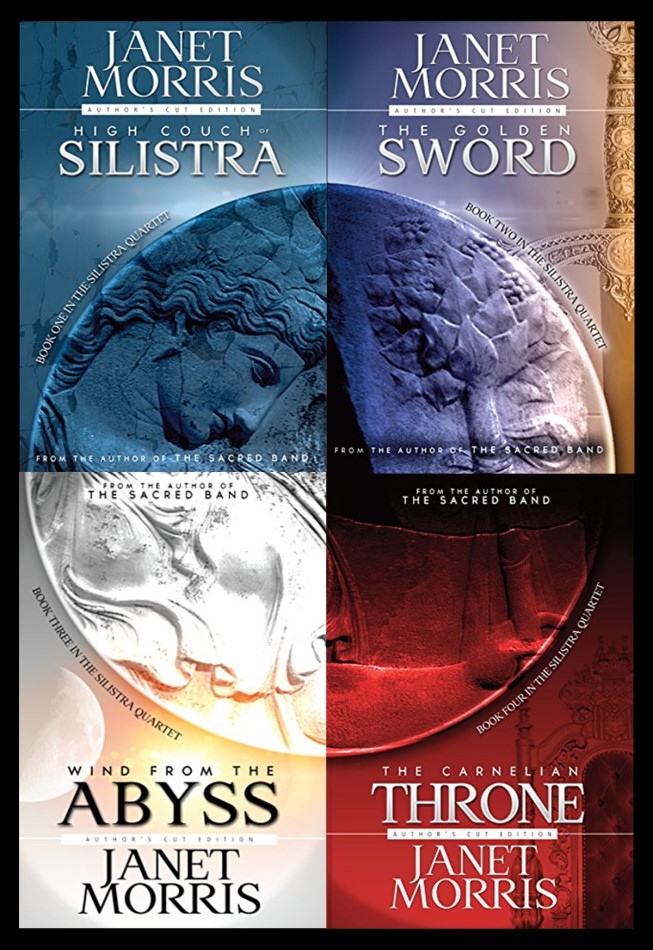
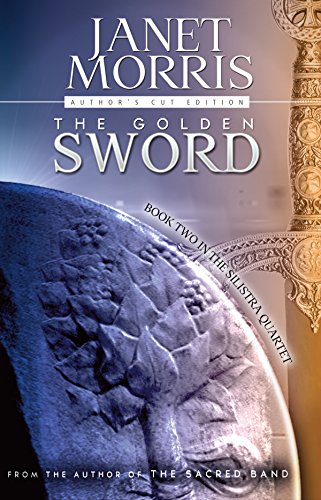
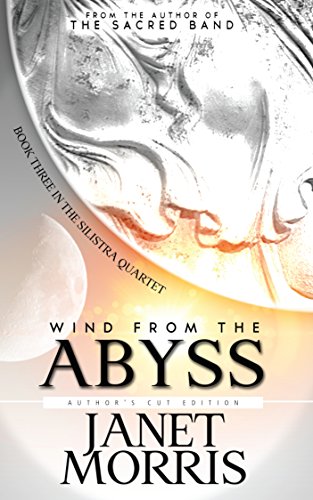
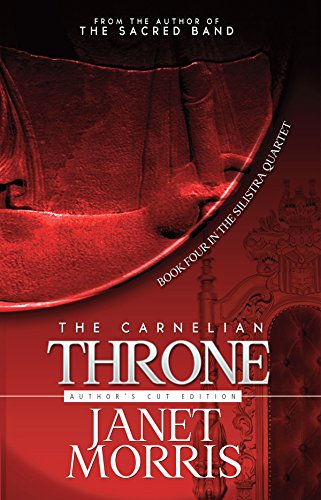
John and Seth — Once again, I thank you for posting another of my articles, and for doing such a bang-up job on the layout and presentation.
Seth did all the layout work on this one, Joe.
Always a pleasure to have another one of your detailed reviews!
Thank you, John. I know that Seth did the layout, and he always does a bang-up job. I thank him once again, too.
Easy to tweak the layout with great content. Glad you put a spotlight on Silistra.
Thanks, Seth. It was a long time in the making.
Good article and review! I read the Silistra books when they were originally published and I recall enjoying them. I think it’s time to revisit them as they sound better than I remember.
One quibble: Thieves’ World was originally published by Ace Books, not Baen. I think some of the later stand-alone Thieves’ World novels the Morrises wrote were published by Baen, but the original stories in the shared-world anthologies were put out by Ace.
Thanks, Mark. My bad. Totally forgot about Ace, and the publishing history behind Thieves World is such a tangled web “business” that I couldn’t even begin to do an article on that subject. I came to Thieves World via the Science Fiction Book Club. I never owned an Ace edition, just a few of the Baen Books, the rest in hardcover. I think a few of the stories were first published elsewhere; three that I remember, written by Marion Zimmer Bradley, appeared in The Magazine of Fantasy and Science Fiction, although I didn’t check publishing dates to see if they were indeed previously published or published after they appeared in TW. The same goes for a number of stories that appeared in a few of the first volumes of the Heroes in Hell series. I didn’t “go deep” on either series for this article, just mentioned them in passing because the article concerns The Silistra Quartet.
No worries Joe. Plus you’re absolutely correct when you said the article was concerning The Silistra Quartet, and it addressed it well. My only other complaint is that it made me order more books! My ‘to be read’ stack is totally out of control, but after re-reading your review I have to get these and read them again.
LOL! I’m sorry I cost you some money, Mark. But look what you get in return: BOOKS!
Great article! I will definitely pick these up!
Thank you, Penelope. The series is definitely worth it. It’s an fully-realized world, and the story complex and engrossing.